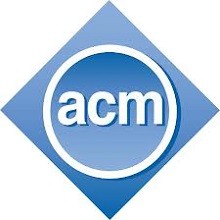
عوامل حیاتی در موفقیت سیستم های برنامه ریزی منابع سازمانی
چکیده
سازمانها ERP را بعنوان یک ابزار حیاتی برای رقابتهای سازمانی تلقی می کنند، همانگونه که در سیستمهای سازمانی متفرقه ادغام میشود و امکان معاملات و تولیدات بی عیب را فراهم می کند. این بررسی، عوامل حیاتی موفقیت (CSFs) را در سیستم های برنامهریزی منابع سازمانی( (ERP رسیدگی می کند. کلیدواژه های مربوط به این موضوع در مطالعه تعریف شده و بمنظور موتورهای جستجو وب شناخته شده و گزارش پایگاه داده برای تحقیقات در سیستم های پیاده سازی ERP و ادغام سیستم های ERP با دیگر سیستم های معروف ( بعنوان مثال، SCM, CRM)، مورد استفاده قرار گرفتند که اهمیت به کسب و کار سازمان ها و محیط های علمی به کار در روشهای مکملی تصدیق شده است. مجموع 341 مقاله بمنظور رسیدگی به سه هدف اصلی مورد بررسی قرار گرفت. این تحقیق، مطالعات قبلی را با ارائه یک طبقه بندی جامع CSFs در قسمت ERP پی ریزی کرد. دوما، نقشه مطالعات آن، بواسطه بررسی تحقیقات کامل و جامع، بمنظور ابعاد و جنبه های متفاوت پیاده سازی سیستم ERP، شناسایی شد. سوما، بررسی تحقیقات را ازلحاظ فاز خاص چرخه حیات ERP و در سراسر چرخه حیات ERP ارائه می کند. این تحقیق نه تنها مقالاتی که در آن سیستم زمینه اولیه تحقیق است را بررسی می کند، بلکه به مقالههای سیستمهای ادغامی ERP و دیگر سیستمهای متداول (بعنوان مثال، SCM, CRM) اشاره دارد. درنهایت این مقاله، یک توضیح جامع از مقالههای منتشر شده درطول این دوره ارائه می کند که می تواند بعنوان یک رهنما در تحقیقات آتی استفاده شود.
1. مقدمه
نرم افزار سیستم سازمانی متشکل از یک صنعت چندمیلیارد دلاری است که بمنظور پشتیبانی از نقشهای توابع تجاری، مولفه هایی تولید می کنند [Chellappa and Saraf 2010]. سرمایه گذاری های IT برای اینکه بزرگترین سرمایه در تجارت مستقر ایالت متحده در طی دهه گذشته باشد, رشد کرده است(Ranganathan and Brown 2006). سازمان ها ERP را بعنوان ابزار حیاتی برای مزیت سازمانی درنظر می گیرند زیرا سیستم های سازمانی متنوع را ادغام می کند و امکان تولید و معاملات بی نقص را می دهد(Framinan). پیاده سازی موفق سیستم ERP, می تواند صورت اموال, تولید, ترابری, کار, و هزینه های پشتیبانی IT را کاهش دهد, بنابراین منجر به تاثیربخشی بیشتر و رقابت بهتر ازنظر بهبود استراتژیکی ابتکارعمل و پاسخدهی به مشتریان می شود (O’Leary 2000; Sandoe et al. 2001; Bharadwaj et al. 2007). درنتیجه, تلقی می شود که ERP یک نقش حیاتی در مدیریت سازمانی امروزه دارد و ستون بسیاری از سازمان ها شده است(Al-Mashari et al. 2003; Parthasarathy et al. 2007).
Organizations perceive ERP as a vital tool for organizational competition as it integrates dispersed organizational systems and enables flawless transactions and production. This review examines studies investigating Critical Success Factors (CSFs) in implementing Enterprise Resource Planning (ERP) systems. Keywords relating to the theme of this study were defined and used to search known Web engines and journal databases for studies on both implementing ERP systems per se and integrating ERP systems with other well- known systems (e.g., SCM, CRM) whose importance to business organizations and academia is acknowledged to work in a complementary fashion. A total of 341 articles were reviewed to address three main goals. This study structures previous research by presenting a comprehensive taxonomy of CSFs in the area of ERP. Second, it maps studies, identified through an exhaustive and comprehensive literature review, to different dimensions and facets of ERP system implementation. Third, it presents studies investigating CSFs in terms of a specific ERP lifecycle phase and across the entire ERP life cycle. This study not only reviews articles in which an ERP system is the sole or primary field of research, but also articles that refer to an integration of ERP systems and other popular systems (e.g., SCM, CRM). Finally it provides a comprehensive bibliography of the articles published during this period that can serve as a guide for future research.
1. INTRODUCTION
Enterprise system software constitutes a multi-billion dollar industry that produces components to support a variety of business functions [Chellappa and Saraf 2010]. IT investments have grown to be the largest category of capital expenditures in US-based businesses over the past decade [Ranganathan and Brown 2006]. Organizations consider ERP to be a vital tool for organizational excellence because it integrates varied organizational systems and enables flawless transactions and production [Framinan et al. 2004]. Successful implementation of an ERP system can reduce inventory, production, shipping, labor, and IT maintenance costs, and thus lead to greater effectiveness and a better competitive edge in terms of improved strategic initiatives and responsiveness to customers [O’Leary 2000; Sandoe et al. 2001; Bharadwaj et al. 2007]. As a result, ERP is perceived as playing a crucial role in today’s enterprise management and is becoming the backbone of many organizations [Al-Mashari et al. 2003; Parthasarathy et al. 2007].
1.مقدمه
2.بررسی فناوری (IT ) پیشین و مطالعات ERP
1.2.اواخر دهه 1990-ناحیه سازمانی
2.2.اوایل دهه 2000- حوزه تجارت مشارکتی
3.2.اواسط دهه-تغییر نسبت غیرمعین در ادغام
4.2.اواخر دهه-جستجو در بکارگیری بهتر زیرساخت IT
3.روش شناسی تحقیق
4. نتایج حاصل از بررسی مطالعات
1.4 چالش های اصلی در پیاده سازی ERP
2.4. CSFs ها در سراسر چرخه حیات ERP
5. محدودیت ها
6.نتیجه گیری
1. INTRODUCTION
2. OVERVIEW OF PREVIOUS IT AND ERP STUDIES
2.1. Late 1990s – The Enterprise Era
2.2. Early 2000s – Collaborative Commerce Era
2.3. Mid Decade – Leveraging the Integration
3. RESEARCH METHODOLOGY
4. RESULTS OF THE LITERATURE REVIEW
4.1. Main Challenges of ERP Implementation
4.2. CSFs Across the ERP Life Cycle
5. LIMITATIONS
6. CONCLUSION
7. FUTURE RESEARCH
- ترجمه فارسی مقاله با فرمت ورد (word) با قابلیت ویرایش، بدون آرم سایت ای ترجمه
- ترجمه فارسی مقاله با فرمت pdf، بدون آرم سایت ای ترجمه
